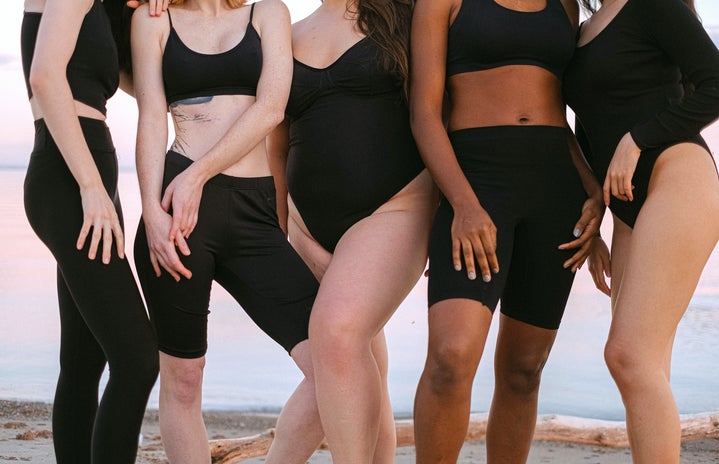Female bodies have always been viewed as a “trend” throughout history. From the hourglass figures of the Victorian era to the svelte silhouettes of the 1920s, we’ve always been expected to look and dress a certain way to appeal to our male counterparts. But with the creation of the internet and the cultivation of new micro-trends every other week, these trends have cycled around faster and had a wider reach than ever before.
Last week, New York Post came under fire for an article in which they claimed that “Heroin Chic” was back in fashion. The “aesthetic” most commonly circulates in eating disorder communities and embodies their desire to fit into the ultra-thin category — like Kate Moss or Gemma Ward in the 90s/00s. Put simply, it’s a glorification of anorexia, substance abuse, and everything that was, and still is, wrong with the high fashion industry.
The issue arises when major publications such as the New York Post acknowledge these harmful views and put them on a pedestal, allowing them to have a wider reach, and influence more young women to engage in harmful behaviours so they can be perceived as “beautiful” by an ever-changing society that will eventually choose to uplift a different body type once they decide thin bodies aren’t worth their time anymore.
One Twitter user, who is known for her pro-recovery content, wrote this:
It’s impossible to see any fault in her logic; bodies should be seen simply as bodies with physical and biological duties rather than something that has to fill an aesthetic purpose to be seen as useful. But, of course, that issue only occurs for those of us born into a female body. A win for the patriarchy yet again, I guess.
Some speculate that this is on the rise again in retaliation to the popularisation of BBL’s, extreme filler, and excessive tanning (read: fetishisation of Black and Brown appearances kickstarted by the Kar-Jenner clan), which has its own issues that need to be addressed. But with celebrities reversing these procedures for a more ”natural” look, alongside the continued promotion of unhealthy eating habits and dietary supplements, it seems as if we’re seeing a return to Eurocentric beauty standards. Say bye-bye to the body positivity movement, because being thin and white is back in style (like it ever left).
So my question is this — When will we stop allowing this to happen?
Will our daughters deal with the pain of constantly trying to be enough, too? Will we have to watch them shrink into themselves like so many of us did, counting their calories, and swapping their toys for scales before they even hit adolescence? Or will we change it for them?
Nobody wins when women are treated as commodities and their bodies as trends except the people who capitalise on our insecurities. This, alongside our lack of bodily autonomy in the medical world and society in general, makes being a woman or an AFAB person incredibly difficult. Something has to give, and it can’t be us anymore.


